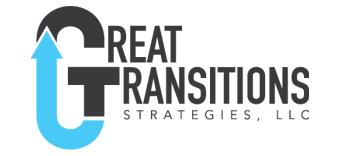“That was the most emotional decision I ever had to make.”
“I was so caught up in the emotion of the moment I had trouble thinking clearly.”
“I was so angry when she said that to me I just reacted.”
“Whenever I have to make an important decision, I make sure I am in a positive state of mind.”
Emotions play an important role in our decisions. We all made decisions in the “heat of the moment” that would have been different had the emotions not been running so high. A lack of emotion can be just as troublesome, because you are not engaged. Pick a situation in the recent past where emotions drove a decision. Hold that event in your head as you continue to read.
If you are a leader, your life revolves around decisions that swirl with emotion. Everyone is trying to get you to make the decision that will support their position. Those decisions are tied to a lot of emotion, for you or those your decision affects.
Consider these two principles as top priorities regarding emotions impacting decisions:
- Know yourself
- Seek to understand
In a sentence, be self- aware, other-aware, and situationally aware. If you are aware that emotions are having an influence on your behavior you are on the right path. It will allow you to make them part of the solution.
Principle 1: Know Yourself
What triggers emotions in you? How much does your mood change based on events, both positive and negative? Is there a behavior or occurrence of an event that totally hijacks your consciousness?
We all experienced an individual who flies off the handle with the delivery of bad news. How about the giddy coworker who cannot refocus after a positive event? Ever had the pleasure of working with the colleague who cannot decide because they are so overwhelmed? Emotions are driving decisions.
Identify the type of events that affect you, set you off or cause you to isolate yourself. That is the trigger. You know what it is because it gives you that jolt of adrenalin, changes your heart rate, and narrows your thinking. You are in a thinking tunnel.
Next, assess your reaction and how you perform once triggered. There is a spectrum of being triggered. Think about being triggered on the angry scale. That can go from being mildly annoyed to being table flipping mad. Sadness, joy, or being stressed all have a spectrum.
Principle 2: Seek to Understand.
Seek to understand what? Consider the adrenalin jolt, take a moment before acting and seek to:
-Understand the cause of the jolt.
What is driving your emotions?
-Understand the reality of the situation.
Was there a valid cause for the jolt?
How is it affecting you?
-Understand the emotions of others.
What are others feeling and why?
-Understand how to positively use emotions in the situation.
How can you use emotions, yours and others, to positively impact the situation?
Test
Use the personal event you recollected at the start of this exercise to evaluate the two principles.
How would your actions have changed if you had known your triggers? Knowing your triggers allows you to plan for those type events.
How would your actions have changed if you sought to understand?
Pausing for a moment when triggered and asking a few simple questions can defuse a tense situation and allow for reasonable effective decisions. It pushes your mind into a problem-solving mode rather than the emotional react mode.
Consider using the two principles to examine several decisions you made while emotionally triggered. Determine if they would have created a different decision or a decision making process.



